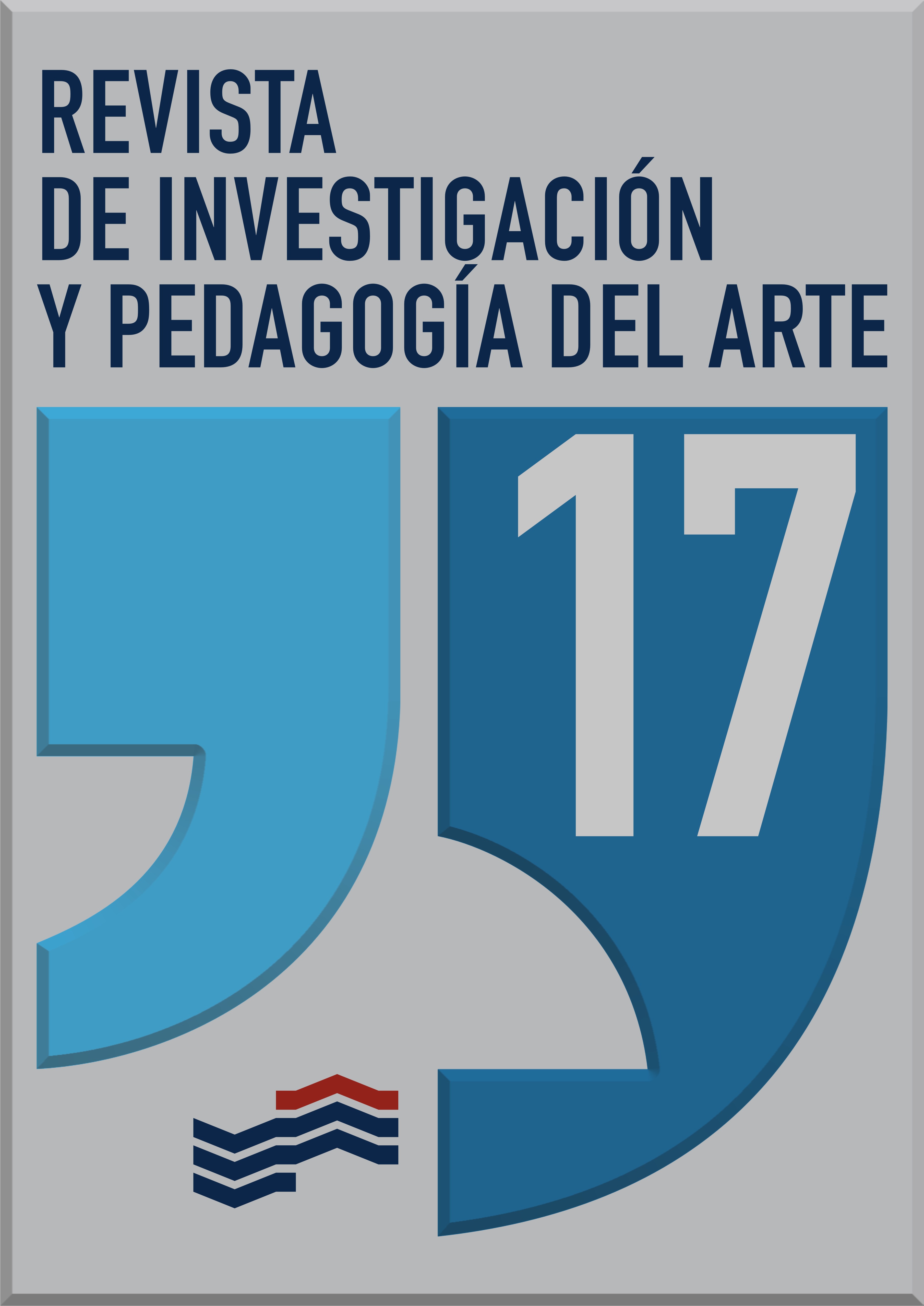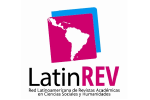The use of the performing arts to explore and communicate ideas from theoretical physics: An exploratory study
DOI:
https://doi.org/10.18537/ripa.17.10Keywords:
theoretical physics, performing arts, science educationAbstract
This exploratory study analyzes the techniques and approaches used by seven theater and dance pieces premiered from the year 2000 to 2020 in Europe to explore themes from theoretical physics and communicate them to adult audiences. Through document analysis of the shows, the ideas of theoretical physics that the shows explore, the theatrical dimensions used to explore them, and the audience reception of the scientific content are determined. It was found that scientific content tended to be communicated through multiple theatrical dimensions and that the direct interaction between the performers and the audience was related to a more positive reception of the scientific content. This exploratory research suggests that the performing arts can offer experiential education of the complicated ideas of theoretical physics. To achieve this kind of interdisciplinary education, the participation of professionals from both the arts and physics in the creation of the show is a key factor.
Downloads
References
Aristóteles (2004). Poética. Madrid: Alianza Editorial. (Original publicada: ca. 335 a.C.)
Ashley-Smith, J. (2000). Science and Art: Separated by a Common Language? Conservation Journal (36), Victoria and Albert Museum. http://www.vam.ac.uk/content/journals/conservation-journal/issue-36/science-and-art-separated-by-a-common-language/
Bain, G. (2017). Wanna Dance With Somebody! Or, A Guide to Managing Social Anxiety Using Theoretical Physics. [Reseña de Wanna Dance with Somebody! Or, A Guide To Managing Social Anxiety Using Theoretical Physics]. Broadway Baby. https://broadwaybaby.com/shows/wanna-dance-with-somebody-or-a-guide-to-managing-social-anxiety-using-theoretical-physics/721555
Barrow, J. (2002). Where Things Happen That Don’t: Staging the Infinite. Thales + Friends. https://thalesandfriends.org/wp-content/uploads/2012/03/barrow_paper.pdf
Bogart, A. (2001). A Director Prepares. Abingdon: Taylor and Francis.
Bouquet, S. (2013). Quantum [Reseña de Quantum]. Theatre Online. https://www.theatreonline.com/Spectacle/Quantum/44972#infospectacle
Brocket, O. y Hildy, F. (2014). History of the Theatre. London: Pearson Education Limited.
Brunello, A. (2013). Writer’s Notes. Jet Propulsion Theatre. https://www.jetpropulsiontheatre.org/prod_theprincipleofuncertainty.html
Brunello, A. The Principle of Uncertainty [Video]. Por cortesía del artista.
Cie Gilles Jobin. (2014). Quantum@Valparaiso Live [Video]. https://vimeo.com/120388187
Coates, E. y Demers, S. (2019). Physics and Dance. New Haven: Yale University Press.
Contreras, M. J. (2013). La práctica como investigación: nuevas metodologías para la academia latinoamericana. REVISTA POIÉSIS 14(21-22), 71-86. https://doi.org/10.22409/poiesis.1421-22.71-86
Duparc, V. (2018). Le Chat De Schrödinger Jennifer Blasek. [Video]. https://m.youtube.com/watch?v=-3o-rmlasqw
Du Sautoy, M. (2003). To infinity and beyond. The Guardian. https://www.theguardian.com/stage/2003/nov/05/theatre.italy
Frisk, H. y Karlsson, H. (2011). Time and Interaction: research through non-visual arts and media. En M. Biggs y H. Karlsson (Eds.) The Routledge Companion to Research in the Arts (pp. 277-291). Abingdon: Routledge.
Frazzetto, G. (2002). Science on the stage. European Molecular Biology Organization 3(9), 818-820. https://dx.doi.org/10.1093%2Fembo-reports%2Fkvf190
Fülle, H. (2017). A Theatre for Postmodernity in Western European Theatrescapes. En M. Brauneck (Ed.) Independent Theatre in Contemporary Europe: Structures Aesthetics Cultural Policy (pp. 275-320). Transcript Verlag. https://doi.org/10.1515/9783839432433
Galfard, C. (2015). The Universe in Your Hand: A journey through space, time and beyond. London: Macmillan.
Galili, I. y Zinn, B. (2007). Physics and Art – A cultural symbiosis in physics education. Sci Educ 16, 441–460. https://doi.org/10.1007/s11191-006-9006-1
Hidalgo Guzmán, J. L. (2015). La enseñanza de las ciencias en la educación básica. Ciencias 115-116, 16-25. https://www.revistacienciasunam.com/es/199-revistas/revista-ciencias-115-116/1912-la-ense%C3%B1anza-de-las-ciencias-en-la-educaci%C3%B3n-b%C3%A1sica.html
Hoffman, R. y Coyaud, S. (2002). Infinite Ideas: A Theatrical Contemplation of Infinity Makes Full Use of Industrial Space. Nature 416, 585. Https://doi.org/10.1038/416585a
Izadi, D. (2017). Arts in science education. Canadian Journal of Physics 95(7), xliii-xlvi. https://doi.org/10.1139/cjp-2016-0590
Lucas, J. (2017). Wanna Dance With Somebody! Or, A Guide to Managing Social Anxiety Using Theoretical Physics Edinburgh 2017 Trailer [Video]. Cortesía del artista.
Lucas, J. (2020). Josh Talks About Why He Wrote Wanna Dance with Somebody! Blog Running Dog Theatre Cic. https://www.runningdogtheatre.com/blog/why-wanna-dance
Mackrell, J. (2002). Ballet De Lorraine [Reseña de Schrödinger’s Cat]. The Guardian. https://www.theguardian.com/stage/2002/nov/01/dance.artsfeatures
Madsen, C., West, R.M. (2003). Public Communication of Astronomy. En Heck, A., Madsen, C. (Eds.) Astronomy Communication (pp. 3-18). Springer, Dordrecht. https://doi.org/10.1007/978-94-017-0801-2_1
Marier, H. (2020). The Dancing Particles [Audio]. European Research Commission. https://erc.europa.eu/projects-figures/stories/dancing-particles
Matamoros, E. (2001). Pobres Bailarines [Reseña de Le Chat de Schödinger]. Mundo Clásico. https://www.mundoclasico.com/articulo/2141/pobres-bailarines
Morgenroth, J. (2010). Physics in Performance: Three Choreographic Adaptations. Dance Chronicle 33(3), 353–387. http://doi.org/10.1080/01472526.2010.517494
Nikolopoulos, K. y Pardalaki, M. (2020). Particle dance: particle physics in the dance studio. Physics Education 55(2), 1-6. https://doi.org/10.1088/1361-6552/ab6952
Norbeth, M. (2002). Infinities 2001-02 [Archivo de Fotos de la Producción]. The Archives of the Piccolo Teatro. https://archivio.piccoloteatro.org/eurolab/?provenienza=1#a
Pardalaki, M. (2020). The Neutrino Passoire [Video]. Por cortesía de la artista.
Pavlidou, M., Butcher, G., y Izadi, D. (2019). Workshop report: Physics education—strategies for engaging female students in physics. AIP Conference Proceedings 2109(1), 1-3. https://doi.org/10.1063/1.5110074
Payne, N. (2012). Constellations. New York City: Dramatists Play Service, Inc.
Purcell, A. (2013). All In A Spin! Dance Work Shows How Physics and Art Collide@Cern. New Scientist. 220 (2938), 51. https://doi.org/10.1016/s0262-4079(13)62444-6
Roberts, J. (2020). Q&A: In a picture – dancing about particle physics. Horizon: The EU Research and Innovation Magazine. https://horizon.scienceblog.com/1412/qa-in-a-picture-dancing-about-particle-physics/
Schinckus, C. (2017). From Cubist Simultaneity to Quantum Complementarity. Found Sci 22, 709-716. https://doi.org/10.1007/s10699-016-9494-7
Thorne, K. (2014). The Science of Interstellar. New York City: W. W. Norton & Company.
Zhu, L. y Goyal, Y. (2018). Art and science: Intersections of art and science through time and paths forward. EMBO Reports 20. https://doi.org/10.15252/embr.201847061
Published
Issue
Section
License

This work is licensed under a Creative Commons Attribution-NonCommercial-ShareAlike 4.0 International License.










